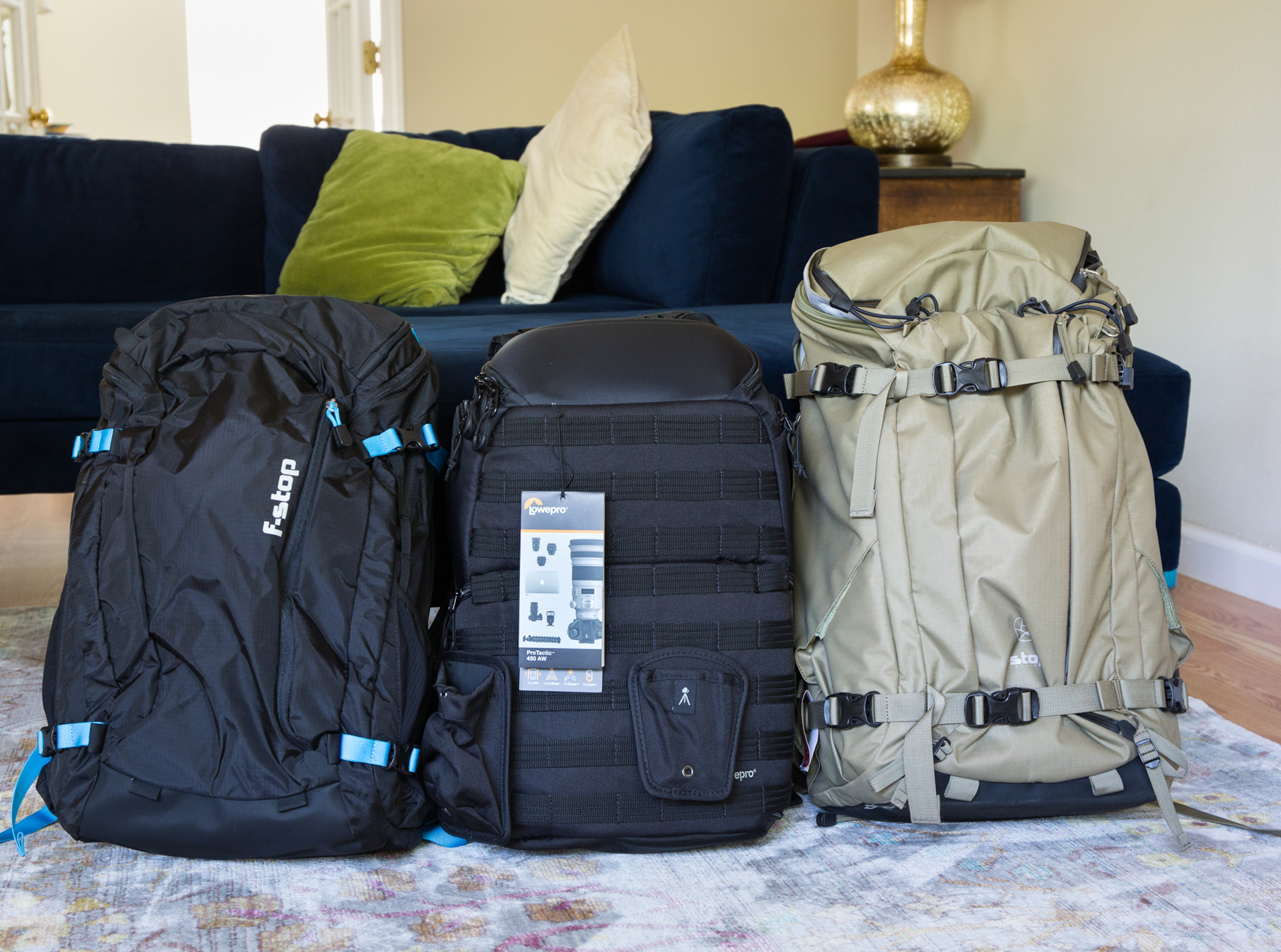Photo credit: © 2018 Michael D. Brown
Update - August 2020: I have had plenty of opportunities to travel with the Kashmir UL now, and I still love it. Like any camera bag, it isn’t perfect but is the best fit that I have found so far for my frame and lets me carry a lot of heavy gear with relative ease. Read on for more details and the other packs I tried …
I admit that I am a little bit obsessed with finding the perfect camera backpack. Even though I know it does not exist, the search is SO fun!
For years, I used an older model Lowepro side-entry backpack that was great for short photography outings but lacked the capacity needed for longer photo trips. What I really liked about that pack though was how well it fit my back. Later, I added the F-Stop Ajna 40 liter backpack, which I like a lot and easily holds what I need. But the Ajna is not my go-to bag because, although it is pretty comfortable when carrying a lot of weight, I find it to be a little too tall for my frame (I’m just shy of 5’4”).
In this picture, the Ajna’s top compartment is empty but you can see the height of the backpack frame reaches well above my neck. The frame is great when just carrying the bag, but it can get in the way if I try to take photos with the pack on and I want to have the option to do that, especially when traveling.
A recent solo trip to Iceland gave me a reason to try to find the medium-sized backpack missing from my stash. I tried out the F-Stop Kashmir UL (ultra-light), which is designed for female photographers but holds only 30 liters, the Lowepro Protactic 450 AW, a medium pack with a completely different design, and kept the Ajna (40 liter capacity) in the running.
These were the contenders …
The F-Stop Kashmir UL (ultra-light, 30L), the Lowepro Protactic 450 AW, and the F-Stop Ajna (40L capacity) in side-by-side view.
And I did a little test packing …
Kashmir, Protactic 450AW, Ajna camera bags and most of the gear I intended to bring. I also added two external hard drives and a laptop.
Gear packed into the Ajna with the removable large slope ICU (internal camera unit).
After testing the bags locally, the Lowepro was out of the running. It is a really nice camera bag but, for me, the straps were not as comfortable as the other two bags, especially when it was packed full. Also, I often have my camera set up with a Canon 100-400ii with a tripod collar and sometimes a L-bracket. It was a bit of a struggle taking that configuration in and out of the bag from the top or side access points.
Between the two F-Stop bags, for Iceland, I opted to try the Kashmir with the removable large slope ICU, which is inside the Ajna bag in the photos above. The Kashmir’s minimal weight and better fit won me over. I did worry that its smaller capacity would be a problem. In test packing, jamming the big ICU into it left only a little room for other travel or field items, like a rain jacket, gloves, snacks, etc. Also, the Kashmir has surprisingly few zipped pockets, which is a drawback.
But I was worrying for nothing because the Kashmir worked really well on my trip.
Although its shoulder straps were slightly less hearty as those on the Ajna, I found the Kashmir to be incredibly comfortable when packed to the brim with heavy gear. I likely overloaded the pack using the full, large slope ICU, shoving all the little extra items in the top and outside pockets, and occasionally attaching a tripod to the outside straps, but it held up just fine.
And I was so glad not to have one more ounce with me than I did. I was traveling alone and wanted to manage my bags without too much struggle. [That goal decidedly was NOT accomplished … oh, there were luggage struggles but not because of the Kashmir.] Plus, because of its size, I didn’t feel as conspicuous walking through the airport or other public places as I did when I traveled with the Ajna in the past. Although the Ajna probably fits a taller person perfectly, it looks a little bit like I might teeter over when its on my back filled with gear. I worried that look might make an airline employee question its weight and carry-on compatibility, especially when traveling on smaller planes.
It is always hard to know whether a bag will work for your body and camera gear before you have it in hand. But if you are smaller framed person – male or female, and are considering the Kashmir, I would give it a try.
ps - I purchased each of these bags myself and just wanted to share with you what I learned from trying them out.









